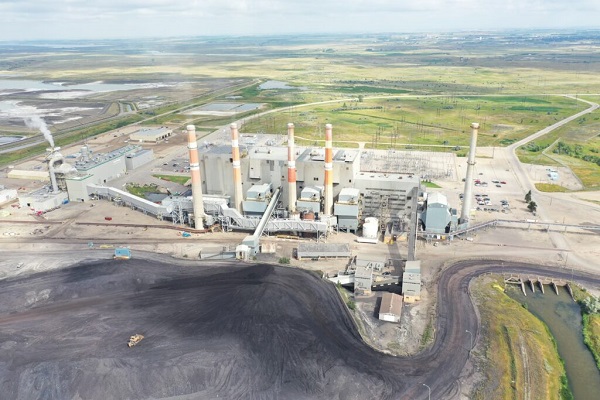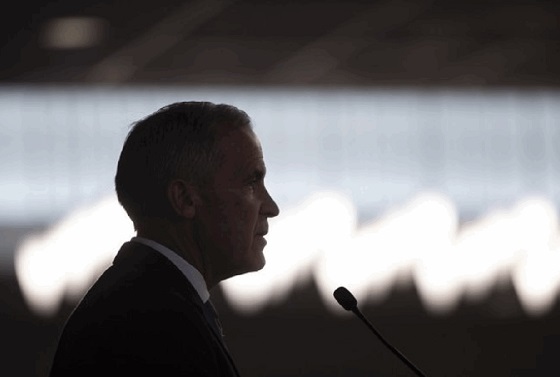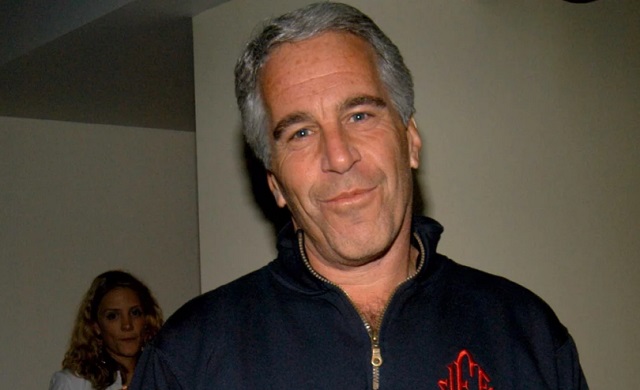Energy
A plan to save coal, power generation, and the oil industry in southeast Saskatchewan

From the Frontier Centre for Public Policy
Stop moving to shut down Saskatchewan coal – it could be the salvation of our oil industry
What if there was a way to keep coal mining jobs in Saskatchewan, continue to produce low-cost electrical power, and extend the production of a substantial portion of Saskatchewan’s oilfields not by decades, but by generations? And in doing so, we could still dramatically reduce carbon dioxide emissions, and maybe save some money by reducing our nuclear rollout?
All of this is now possible, and it has everything to do with keeping our coal miners digging and our coal-fired power plants going, maybe even renewing them.
There was a potentially major development for Saskatchewan’s energy sector buried in Whitecap Resources Inc.’s year-end financial report released on Feb. 21. Whitecap said about using CO2 for enhanced oil recovery, “We have also recently started CO2 injection at a pilot CO2 flood into the Frobisher formation underlying the Weyburn Midale unit. We drilled two (2.0 net) producer wells and three (3.0 net) injection wells in 2023 and initiated CO2 injection in late 2023. Early results are encouraging with a notable production response coming through approximately one month after injection, increasing oil rates on the two producer wells from approximately 40 bpd to over 200 bpd, per well. Further technical analysis to determine commerciality and large-scale development is ongoing, and we will provide updates as next steps are determined.”
While the Bakken formation got all the headlines starting around 2007, the reality is in southeast Saskatchewan, very few Bakken wells are drilled these days. Most of the activity has been Frobisher wells, especially around Steelman, where it has been targeted for decades. So if the Frobisher responds well to tertiary recovery through carbon dioxide floods, it opens up a lot of possibilities for extending the life of some of Saskatchewan’s most prolific oilfields, taking recovery rates from the mid-20 per cent range to over 50 per cent.
Back in 2012, Canadian Natural Resources Limited president and CEO Steve Laut expressed interest in using CO2 for enhanced oil recovery in the Steelman Unit.
Whitecap’s initial results were not a five per cent improvement, or 50 per cent, but five times higher. That’s something everyone, including the provincial government, should take notice of. Imagine if you could increase crop production from 60 bushels to the acre to 300 bushels? Or quintuple potash or uranium production from certain mines? You’d be an idiot to not at least take a hard look at it.
I’m not suggesting it will remain anywhere close to that level, but the fact the CO2 flood in the Weyburn Unit, in the Vuggy and Marly units of the Midale formation, has already dramatically increased recovery rates and lengthened the lifespan of a field that otherwise would have long gone dry is significant. If the same process can be expanded to the much more prolific Frobisher formation, that’s a very big deal.
Even if it was a 25 per cent improvement – that’s well worth investigating.
Frobisher is a big deal
How prolific is the Frobisher?

Most of the drilling activity in southeast Saskatchewan follows a certain pattern. The majority is along the Frobisher subcrop – the edge of the formation where it pinches out, forming a structural trap. Of the 16 rigs working in Saskatchewan on March 3, it’s a good bet 10, and possibly more, were drilling Frobisher wells. The daily well report for March 3 published by the Ministry of Energy and Resources shows out of 19 wells listed that day in Estevan area of responsibility, all 19, across five oil producers, were either targeting the Frobisher. It may be a fluke all that day showed the Frobisher, but it definitely shows its significance.
So if Whitecap, which has been growing to be one of Saskatchewan’s largest oil producers, has found a way to substantially increase production from this formation, shouldn’t we take a hard look at how we can take advantage of it?
Stop the process of winding down coal
There’s one thing we should do right now – stop this idea of shutting down our coal-fired power plants near Estevan. You hardly hear SaskPower mention coal-fired power anymore. I keep hearing how those plants are getting enough maintenance to just get them to the planned phase out of 2030, but not likely a day beyond that. The way things are going, they’ll likely limp to the finish line, but not an inch past that. Similar things are said to me about the mines and their iron.
I’m suggesting we should strongly reconsider that. Pour some money into keeping both the power plants and the mines viable should we choose to extend their lives beyond 2030.
The Government of Saskatchewan and SaskPower should have some real serious discussions with Whitecap, and possibly other oil companies like CNRL, about the possibility of dramatically increasing carbon capture and producing as much CO2 as we can. That means putting carbon capture on Shand Power Station. But it could also mean either refurbishing Boundary Dam Unit 6 or, shockingly, building Shand Unit 2, and maybe even Unit 3, with High Efficiency Low Emissions (HELE) technology, designed from the ground up with carbon capture running from Day 1.
One might say that’s going to cost billions, and you’d be right. But I dare say doing so will cost less than just one 300 megawatt small modular reactor, whose price is not yet known, but previous SaskPower Minister Don Morgan said could run between $3 and $5 billion.
It’s going to take a long time to squeeze the first megawatt out of that first reactor. If everything goes to plan (and it never, ever goes to plan with nuclear), we might see the first SMR megawatt around 2034-35. Putting CCS on our existing coal fleet, and maybe, dare I say, expanding it, with HELE and CCS, could help bridge the gap in the interim until we get several SMRs up and running, and have become proficient in their operation. That’s baseload power that won’t go to zero like wind does every so often, and solar does every night.
Doing so would keep the Estevan economy rolling, not just from coal mining and power generation, but also oil production.
I’ve been writing about the Saskatchewan oil industry for almost 16 years now, and I am increasingly alarmed by the fact I haven’t seen the “next big thing,” in southern Saskatchewan. Drilling numbers keep on their slow decline. Companies like Crescent Point have largely lost interest and are pouring their capital expenditure money into exciting Alberta plays. That may be great for Alberta, but Saskatchewan needs to do something to keep things going here. That we’ve kept oil production relatively flat for the last 23 years is a small miracle. But if we don’t get a lot more new investment, it won’t stay that way.
The Sask Party provincial government a few years ago set a bold goal of increasing oil production from the current 454,000 barrels per day to 600,000 barrels by 2030. I asked Premier Moe about that in my year end interview with him last December. He said he thought it was a modest goal.
But as I pointed out to him, and Energy and Resources Minister Jim Reiter, I’m not seeing evidence of the province moving to make that happen.
This is something the Government of Saskatchewan, through its Crown corporation SaskPower, can do. If we tell the feds to stick it when it comes to shutting down coal by 2030, if we put carbon capture on existing units and even build new coal units with carbon capture, then supply that CO2 to companies like Whitecap, and maybe others like Canadian Natural Resources Limited, we could extend the life of our most prolific play in southeast Saskatchewan. We might even increase its production while we’re at it. All the while, we’d be ensuring baseload power production.
This plan’s impact would be measured in generations, not an election cycle, or a corporate quarter.
And it might also save us some money by reducing our nuclear expenditure.
But action has to be taken now. Because if we let those power plants and mines slide past the point of no return, an opportunity may be lost that we will be kicking ourselves for later.
We can’t let that happen.
Brian Zinchuk is editor and owner of PipelineOnline.ca, and occasional contributor to the Frontier Centre for Public Policy. He can be reached at [email protected].
Energy
Expanding Canadian energy production could help lower global emissions

From the Fraser Institute
By Annika Segelhorst and Elmira Aliakbari
Canada’s most timely opportunity to lower overall global emissions is through expanded exports to regions that rely on higher-emitting fuel sources.
The COP30 climate conference in Brazil is winding down, after more than a week of discussions about environmental policy and climate change. Domestic oil and natural gas production is frequently seen as a fundamental obstacle to Canada’s climate goals. Yet the data shows that Canadian energy production is already among the world’s cleanest, generating lower greenhouse gas (GHG) emissions per barrel-of-oil-equivalent produced, among major producing countries. Expanding the role of Canadian oil and gas in global markets can replace higher GHG-emitting alternatives around the world, driving down global GHG emissions.
Prime Minister Carney’s first budget highlights Canada’s “emissions advantage” in a chart on page 105 that compares the amount of GHG emissions released from producing oil and natural gas across 20 major producing countries. Compared to many other top-producing countries, Canada releases fewer GHG emissions per barrel of oil and gas produced when considering all phases of production (extraction, processing, transport, venting and flaring).
For oil production, Canada has an advantage over most major producers such as Venezuela, Libya, Iran, Algeria, Nigeria, China, Russia and Qatar. Canada’s emissions per barrel of oil produced are below the global average, making Canada among the lower emitting producers worldwide.
Similarly, Canada’s natural gas production has an emissions per barrel equivalent that is lower than the global average and is below major producers such as Turkmenistan, Uzbekistan, Nigeria, Indonesia, China, Argentina, Malaysia, Australia, Algeria, Iran, Russia, India and the United States. The chart below reveals countrywide average GHG emissions per barrel of oil or natural gas produced in 2022.
Source: International Energy Agency (2023), The Oil and Gas Industry in Net Zero Transitions 2023, IEA, Paris, p. 69
Canada’s emissions advantage stems from years of technological innovations that require less energy to produce each barrel of oil along with improvements in detecting leaks. From 1990 to 2023, Canada’s total production of crude oil rose by 199 per cent, while emissions per barrel of oil produced declined by 8 per cent, according to Environment and Climate Change Canada (ECCC). In the oilsands, since 1990 emissions per barrel have fallen by nearly 40 per cent while emissions from natural gas production and processing have decreased by 23 per cent.
Canada has already implemented many of the most practical and straightforward methods for reducing carbon emissions during oil and gas production, like mitigation of methane emissions. These low-hanging fruits, the easiest and most cost-effective ways to reduce emissions, have already been implemented. The remaining strategies to reduce GHG emissions for Canadian oil and gas production will be increasingly expensive and will take longer to implement. One such approach is carbon capture, utilization, and storage (CCUS), a technology which traps and stores carbon dioxide to prevent it from reaching the atmosphere. Major infrastructure projects like this offer potential but will be difficult, costly and resource intensive to implement.
Rather than focusing on increasingly expensive emission reductions at home, Canada’s most timely opportunity to lower overall global emissions is through expanded exports to regions that rely on higher-emitting fuel sources. Under a scenario of expanded Canadian production, countries that presently rely on oil and gas from higher-emitting producers can instead source energy from Canada, resulting in a net reduction in global emissions. Conversely, if Canada were to stagnate or even retreat from the world market for oil and gas, higher-emitting producers would increase exports to accommodate the gap, leading to higher overall emissions.
As Canada’s climate and energy policy continues to evolve, our attention should focus on global impact rather than solely on domestic emissions reductions. The highest environmental impact will come from enabling global consumption to shift towards lower-emitting Canadian sources.
Energy
Here’s what they don’t tell you about BC’s tanker ban

From Resource Works
By Tom Fletcher
Crude oil tankers have sailed and docked on the British Columbia coast for more than 70 years, with no spills
BC Premier David Eby staged a big media event on Nov. 6 to once again restate his opposition to an oil pipeline from Alberta to the Prince Rupert area.
The elaborate ceremony to sign a poster-sized document called the “North Coast Protection Declaration” was dutifully covered by provincial and national media, despite having no actual news content. It is not a response to Alberta’s plan to finance preliminary work on a new oil pipeline, Eby insisted. It’s to confirm the direction of growing the BC economy without, you know, any more oil pipelines.
The event at the opulent Vancouver Convention Centre West was timed to coincide with the annual BC Cabinet and First Nations Leaders Gathering, a diplomatic effort set up 10 years ago by former premier Christy Clark. This year’s event featured more than 1,300 delegates from 200 First Nations and every BC government ministry.
A high-profile event with little real news
The two-day gathering features 1,300 meetings, “plus plenary and discussion sessions on a variety of topics, including major projects, responding to racism, implementation of the Declaration Act, and more,” the premier’s office announced.
Everyone’s taxpayer-funded hotels and expense accounts alone are an impressive boost to the economy. Aside from an opening news conference and the declaration event at the end, the whole thing is closed to the public.
The protection declaration is a partnership between the BC government and the Coastal First Nations, Eby said. As I mentioned in my Oct. 15 commentary, Coastal First Nations sounds like a tribal council, but it isn’t. It’s an environmental group started in the late 1990s by the David Suzuki Foundation, with international eco-foundation funding over the years that led to the current name, Coastal First Nations Great Bear Initiative.
The evolution of the Coastal First Nations initiative
Their current project is the Great Bear Sea, funded by $200 million from the federal government, $60 million from BC, and $75 million from “philanthropic investors.” This is similar to the Great Bear Rainforest conservation project, backed by mostly US billionaire charity funds, that persuaded Justin Trudeau to turn the voluntary tanker exclusion zone into Canadian law.
Leadoff speaker in Vancouver was the current Coastal First Nations president, Heiltsuk Chief Marilyn Slett. She repeated a well-worn story about her remote Central Coast community of Bella Bella still struggling with the effects of an “oil spill” in 2016.
In fact, the 2016 event was the sinking of a tugboat that ran aground while pushing an empty fuel barge back down from Alaska to a refinery in Washington to be refilled. The “oil spill” was the diesel fuel powering the tugboat, which basic chemistry suggests would have evaporated long ago.
Fuel dependence on the remote BC coast
Remote coastal settlements are entirely dependent on fuel shipments, and Bella Bella is no different. It has no road or power grid connections, and the little seaside village is dominated by large fuel tanks that have to be refilled regularly by barge to keep the lights on.

Alaska North Slope crude has been shipped by tanker to Washington and beyond for more than 60 years. Yes, there’s a North Coast “exclusion zone” where US-bound tankers go west around Haida Gwaii rather than down the Inside Passage, but once the ships reach Vancouver Island, they sail inside right past Victoria to refineries at Cherry Point, March Point, and other US stops.
Through the tall windows of the Vancouver convention centre, you can watch Aframax crude tankers sail past under the Second Narrows and Lions Gate bridges, after loading diluted bitumen crude from the expanded Westridge Terminal in Burnaby. That is, of course, the west end of the Trans Mountain Pipeline, which has operated since 1954 with no spills, including the branch line down to the Cherry Point complex.
There are many more crude tankers exiting Vancouver now that the TMX expansion is complete, but they aren’t filled all the way because the Second Narrows is too shallow to allow that. A dredging project is in the works to allow Aframax-sized tankers to fill up.
A global market for Alberta crude emerges
They enter and exit Burrard Inlet surrounded by tethered tugboats to prevent grounding, even if the tanker loses power in this brief stretch of a long voyage that now takes Alberta crude around the world. Since the TMX expansion, shipments that used to go mostly to California now are reaching Korea, Japan, China, Hong Kong, and Singapore as well.
The US captive discount has shrunk, the tripled pipeline capacity is rapidly filling up, and pumping stations are being added. This is the very definition of Mark Carney’s nation-building projects to get Canada out of the red.
The idea that the North Coast can host fuel barges, LNG tankers, bunker-fired cruise ships, and freighters but can’t tolerate Canadian crude along with the US tankers is a silly urban myth.
Tom Fletcher has covered BC politics and business as a journalist since 1984. [email protected]. X: @tomfletcherbc
-

 Alberta2 days ago
Alberta2 days ago‘Weird and wonderful’ wells are boosting oil production in Alberta and Saskatchewan
-

 Alberta2 days ago
Alberta2 days agoAlberta to protect three pro-family laws by invoking notwithstanding clause
-

 Business2 days ago
Business2 days agoCanada is failing dismally at our climate goals. We’re also ruining our economy.
-

 Health1 day ago
Health1 day agoCDC’s Autism Reversal: Inside the Collapse of a 25‑Year Public Health Narrative
-

 Energy2 days ago
Energy2 days agoThe Carney Government is Hijacking the Phase “Energy Superpower” to Advance Their Agenda
-

 Crime1 day ago
Crime1 day agoCocaine, Manhunts, and Murder: Canadian Cartel Kingpin Prosecuted In US
-

 Health1 day ago
Health1 day agoBREAKING: CDC quietly rewrites its vaccine–autism guidance
-

 espionage2 days ago
espionage2 days agoTrump: “I HAVE JUST SIGNED THE BILL TO RELEASE THE EPSTEIN FILES!”









